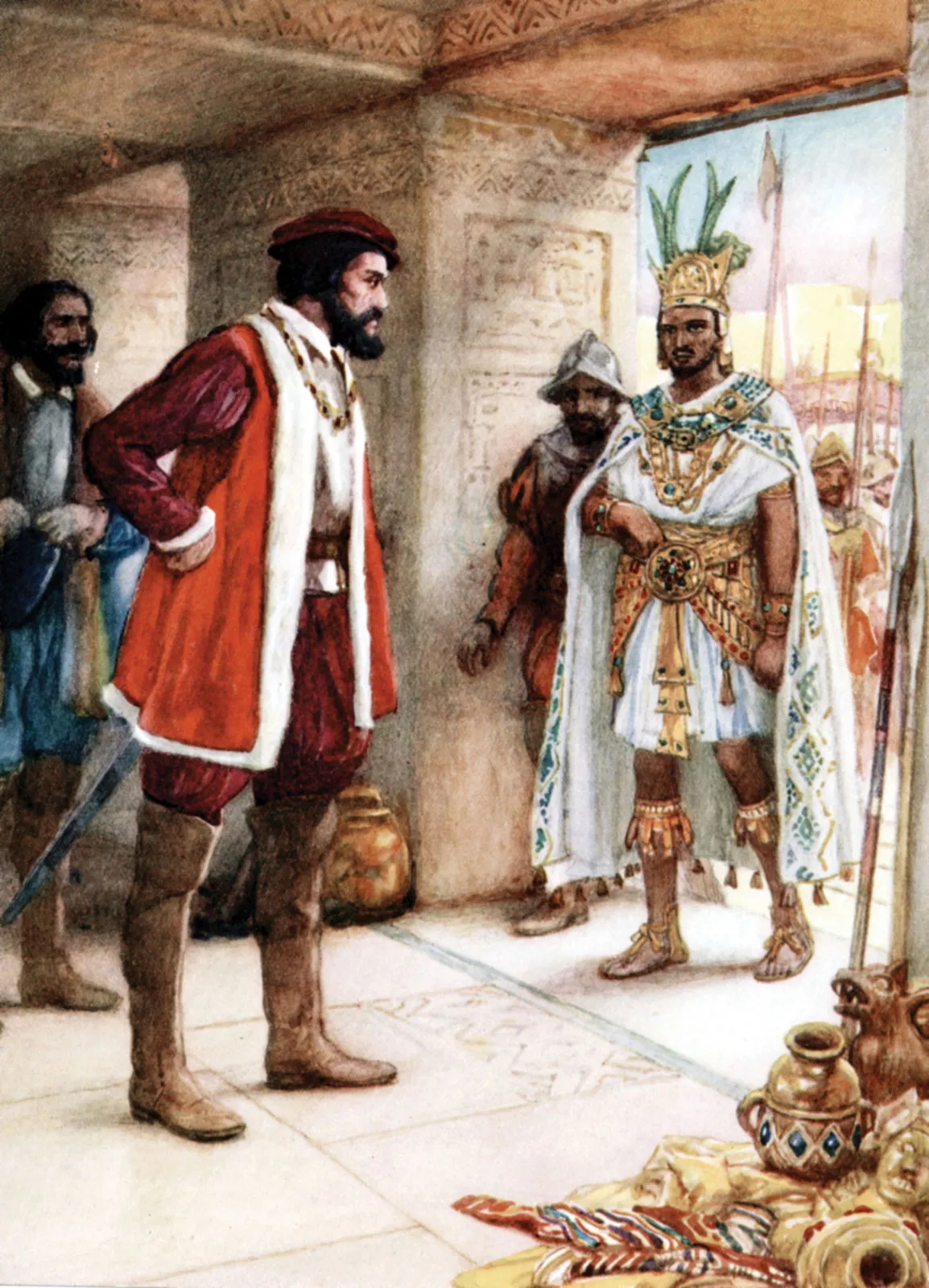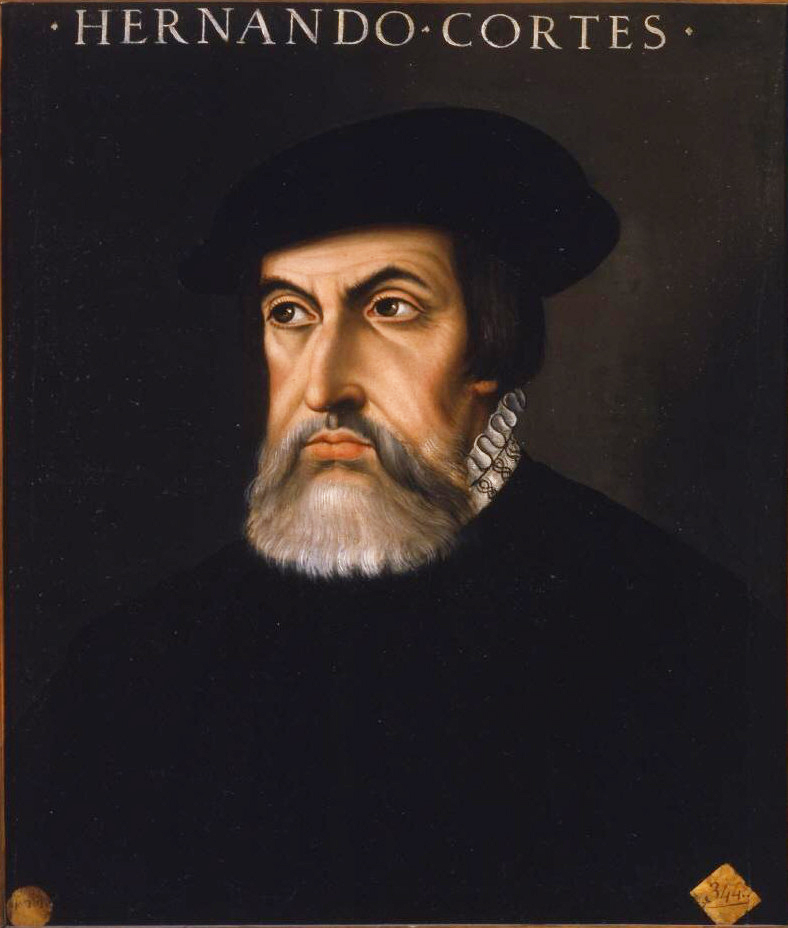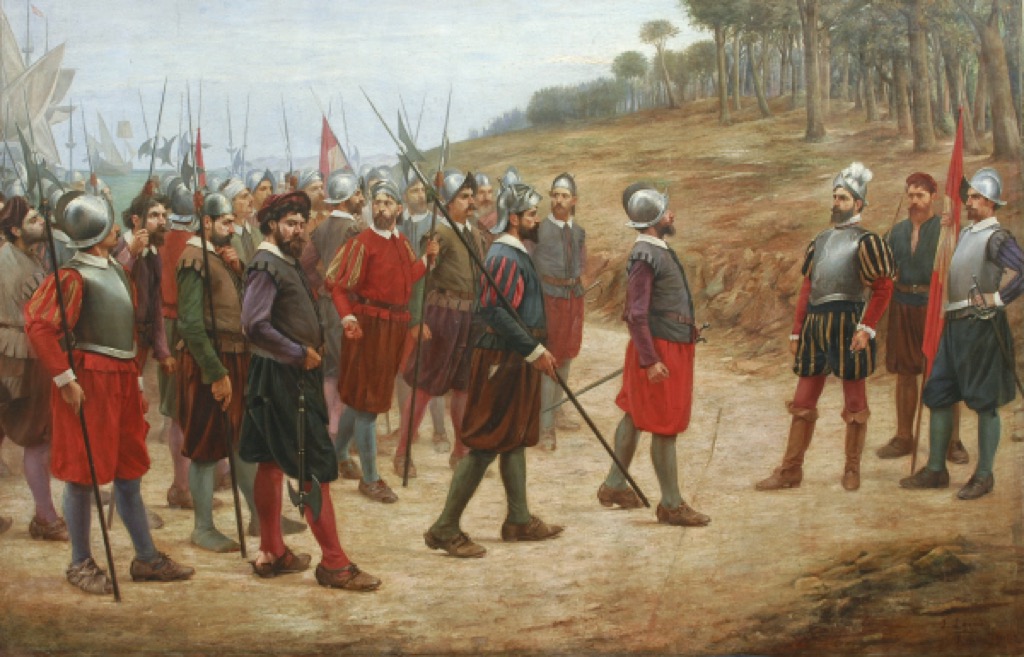8. THE EUROPEAN RENAISSANCE

THE BEGINNING OF THE AGE OF EXPLORATION

THE BEGINNING OF THE AGE OF EXPLORATION
 Prince Henry of Portugal
Prince Henry of Portugal
 Social, economic and political
Social, economic and political
implications
The textual material on page below is drawn directly from my work
A Moral History of Western Society © 2024, Volume One, pages 302-308.
|
A Timeline of Major Events during this period
1522 French King Francis I sends Florentine navigator Verrazzano to explore the coastal regions of North America (1522-1524) |
SOME OF THE MAJOR FIGURES IN THE PROCESS |
This
was also the "Age of Exploration" – a term we use in reference to the
beginning of the exploration of the seas and continents around Europe
by a wide variety of Italian, Portuguese, and Spanish explorers –
professional adventurers really.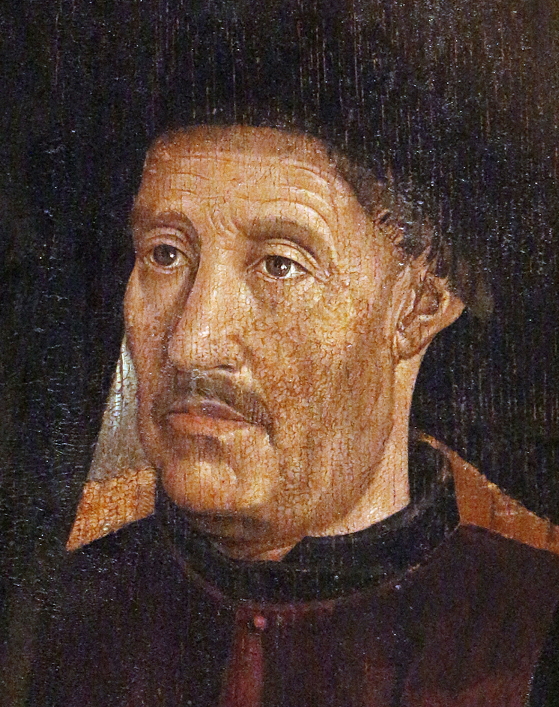 In
1419 Prince Henry of Portugal established at Sagres a school with a
library and observatory to study the earth in support of his love of
overseas exploration. He gathered at Sagres scholars from all
around Europe to improve his maps – and general knowledge of the
earth's geography (such as was available to early 15th century
Europe). At the same time, Henry was sending out numbers of
sailors to explore the African coast in search of a southern route
around Africa to the East. In
1419 Prince Henry of Portugal established at Sagres a school with a
library and observatory to study the earth in support of his love of
overseas exploration. He gathered at Sagres scholars from all
around Europe to improve his maps – and general knowledge of the
earth's geography (such as was available to early 15th century
Europe). At the same time, Henry was sending out numbers of
sailors to explore the African coast in search of a southern route
around Africa to the East.
Dias was a Portuguese explorer who in 1488 was the first to sail around the southern tip of Africa at the Cape of Good Hope and point the way east to the Indies via the Indian Ocean. He was later lost at sea off the Cape of Good Hope in 1500 during a new naval and commercial mission to India headed by Pedro Alvares Cabral. 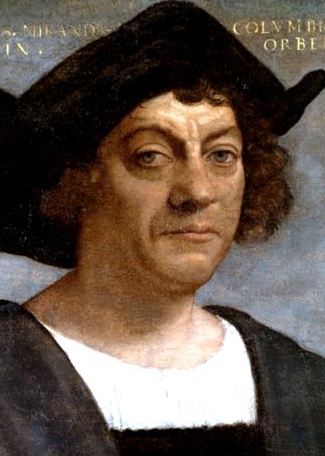 Columbus
made four journeys to America. The first trip (1492-1493) he
returned after creating a settlement La Navidad on the huge island he
called Española. After leaving half his crew there, he was able
(through storm and political problems with the Portuguese) to return to
present the King and Queen with a chest of gold items and some Indian
"interpreters." Columbus
made four journeys to America. The first trip (1492-1493) he
returned after creating a settlement La Navidad on the huge island he
called Española. After leaving half his crew there, he was able
(through storm and political problems with the Portuguese) to return to
present the King and Queen with a chest of gold items and some Indian
"interpreters."The second trip (1493-1496) was undertaken with a huge fleet (17 ships and 1200 men) … but failed to find any gold, struggled with some of the Indians, and faced a huge rebellion of his men. He left his brothers in charge and returned to Spain … with no gold. The third trip (1498-1500) was undertaken mostly to block an effort by John of Portugal to match the Spanish effort. But Columbus found only chaos upon his arrival at Española. News of the chaos reached back to Spain … and Francisco de Bobadilla was sent to Española to clear up the mess. He and Columbus fought … and Bobadilla sent Columbus back to Spain in chains. Columbus, after much pleading was then authorized to undertake a small, fourth trip (1502-1504). But he was refused entry at Española when he arrived there. So he moved, via Cuba and Jamaica, on to the mainland (Honduras, Nicaragua and Panama). In Panama he discovered his gold … but also naval disaster and personal sickness. He managed to get back to Jamaica … but waited for a year for support allowing him to make his return to Spain. He was not received officially on his return (the Queen was dying) and only belatedly managed to receive his share of the gold profits. He died a very sick man at age 54 (1506), largely forgotten … though his two books, Book of Privileges (1502) and Book of Prophecies (1505) would leave some kind of legacy. 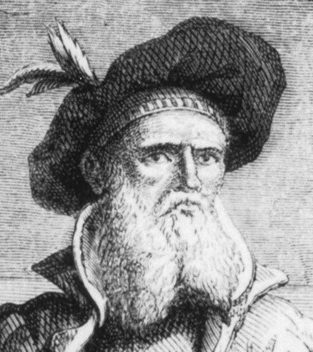 Cabot
was an Italian explorer who came into service to English King Henry
VII. Like Columbus, he had long been convinced that Asia could be
reached by sailing West. News of Columbus' discovery encouraged
Henry to take up Cabot's proposal to try to reach the East by sailing
West. Thus in 1497 Cabot set out to reach the East for the
English king. He instead encountered North America (possibly
Newfoundland or Labrador), though on his return to England he affirmed
that it was northeastern Asia he had encountered. In any case he
brought news of the wealth of fish and good land for settlement in the
land he had encountered. Cabot
was an Italian explorer who came into service to English King Henry
VII. Like Columbus, he had long been convinced that Asia could be
reached by sailing West. News of Columbus' discovery encouraged
Henry to take up Cabot's proposal to try to reach the East by sailing
West. Thus in 1497 Cabot set out to reach the East for the
English king. He instead encountered North America (possibly
Newfoundland or Labrador), though on his return to England he affirmed
that it was northeastern Asia he had encountered. In any case he
brought news of the wealth of fish and good land for settlement in the
land he had encountered. The following year, this time with five ships and 200 men, Cabot set out again on the same journey West. But the details of what then occurred are hazy. In any case his expedition failed to return to England. As a consequence, little of lasting value resulted from his efforts. 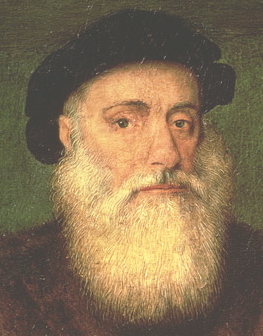 Da
Gama was a Portuguese explorer who first reached India in 1498 by
sailing around the southern tip of Africa at the Cape of Good Hope,
continuing up the eastern shores of Africa, and crossing the Indian
ocean from (modern-day) Kenya to Calicut in India. Da
Gama was a Portuguese explorer who first reached India in 1498 by
sailing around the southern tip of Africa at the Cape of Good Hope,
continuing up the eastern shores of Africa, and crossing the Indian
ocean from (modern-day) Kenya to Calicut in India.He sailed for India a second time in 1502 at the head of a fleet of 20 ships that was charged with punishing the Zamorin (Muslim ruler) of Calicut for having massacred the Portuguese left behind in India by Cabral. Treaties were concluded with neighboring Hindu enemies of the Zamorin and an effort of an Arab fleet to drive away da Gama was defeated. In early 1503 da Gama returned with his fleet to Portugal. In 1524 he was sent by King John III to be the Portuguese viceroy in India. He established an administrative center at Goa and immediately began the process of strengthening the Portuguese commercial position in India. But he became sick and died before the year was out. 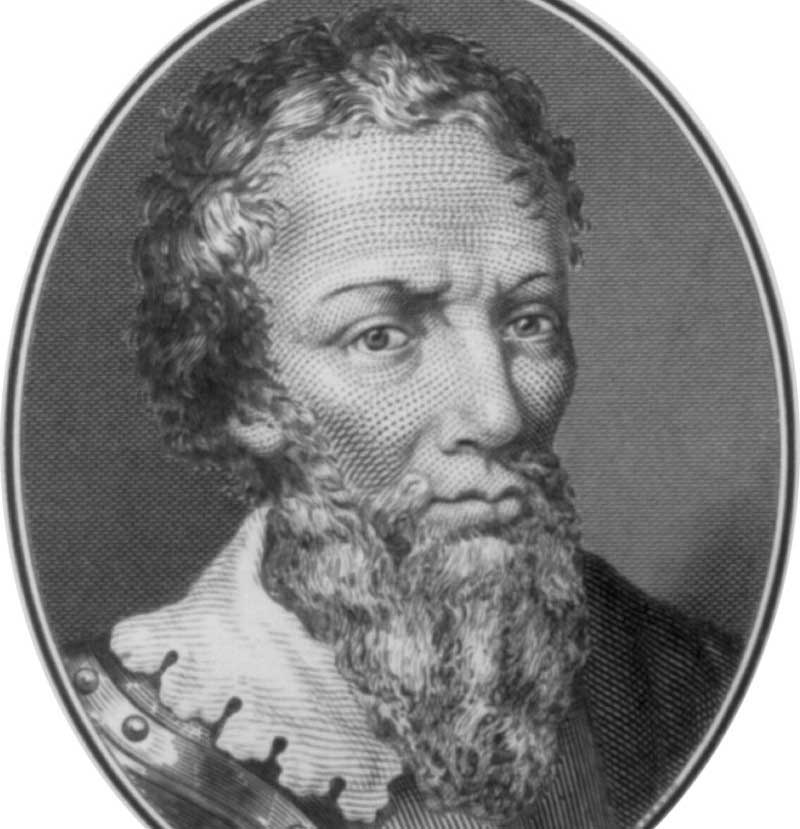 Cabral
was a Portuguese explorer commissioned by Manuel I to follow up on da
Gama's exploration of India in 1498 and consolidate the Portuguese
position in India. Cabral
was a Portuguese explorer commissioned by Manuel I to follow up on da
Gama's exploration of India in 1498 and consolidate the Portuguese
position in India. In March of 1500 Cabral left for India with 13 ships, but headed westward into the Atlantic to sail around the becalmed waters of Guinea – and discovered the shores of Brazil in the process. He then headed east for the Cape of Good Hope (where he lost 4 of his ships and the fellow explorer Bartolomeu Dias). In September he arrived at Calicut and signed a commercial treaty with the Zamorin (Muslim ruler) permitting him to establish a fortified trading post at Calicut. But disputes arose with the Muslim merchants and in December the trading post was attacked and most of the inhabitants massacred before Cabral could get a rescue party ashore from the boats offshore. Cabral took revenge by bombarding the city and capturing 10 Muslim ships – before sailing on to Cochin where he received a friendlier reception. Here he traded for precious spices. In early 1501 he set sail for Portugal – but disasters along the way permitted him to complete the voyage with only four of the ships he had originally started the expedition with. Despite his warm reception by the Portuguese King Manuel, it was de Gama and not Cabral who received the commission to follow up Cabral's commercial venture with an even grander expedition in 1502. Cabral retired from royal service and lived out his life quietly on his rural estates until his death in 1520. 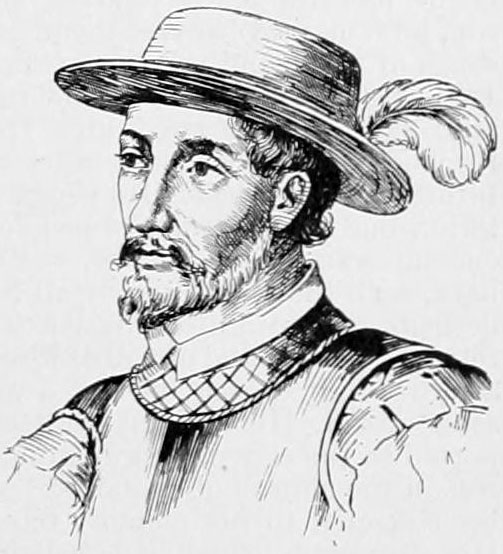 A
Spanish nobleman-soldier who was appointed governor of the eastern
portion of the island of Hispañola. Stories of gold to be found
on the adjoining island (Puerto Rico) led him to explore and settle the
first Spanish settlement on that island (near present-day San Juan) in
1508-1509. He was appointed briefly as governor of that island –
until political intrigue led to his removal from that position. A
Spanish nobleman-soldier who was appointed governor of the eastern
portion of the island of Hispañola. Stories of gold to be found
on the adjoining island (Puerto Rico) led him to explore and settle the
first Spanish settlement on that island (near present-day San Juan) in
1508-1509. He was appointed briefly as governor of that island –
until political intrigue led to his removal from that position. But he was not to be pushed aside and he was soon off exploring to the north in pursuit of a story about a fountain that could restore a person's youth. This brought him in early 1513 to the Bahamas and to Florida (which he first supposed was also an island – until he started sailing south along its coast and discovered its true extent). He returned to Spain in 1514 and had himself confirmed by the King as Governor of Bimini and Florida. He returned to Florida in 1521 with 200 men, with the intent of establishing a Spanish colony there. But upon his arrival he was hit by a Seminole arrow and died soon thereafter in Cuba 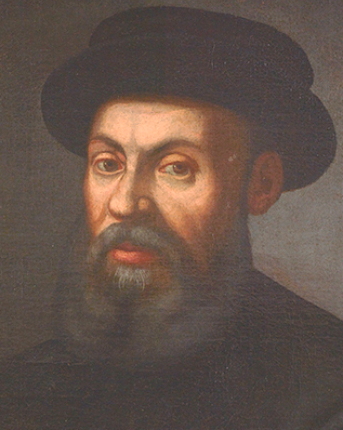 Magellan
was born in Sabrosa of Portuguese nobility – though in his late
thirties he renounced his Portuguese citizenship and came into service
to the Spanish King Charles I. It was to Charles that he
announced his idea of avoiding the well- entrenched Portuguese
positions along the route to the East Indies – by sailing west from
Spain across the Atlantic and continuing in that direction (by-passing
the Americas) until he arrived at the Indies from the East! He
received Charles' support and on September 20, 1519, he set sail from
Sanlúcar de Barrameda with five ships. Magellan
was born in Sabrosa of Portuguese nobility – though in his late
thirties he renounced his Portuguese citizenship and came into service
to the Spanish King Charles I. It was to Charles that he
announced his idea of avoiding the well- entrenched Portuguese
positions along the route to the East Indies – by sailing west from
Spain across the Atlantic and continuing in that direction (by-passing
the Americas) until he arrived at the Indies from the East! He
received Charles' support and on September 20, 1519, he set sail from
Sanlúcar de Barrameda with five ships.He crossed the Atlantic and in November arrived at modern-day Argentina, exploring the Rio de la Plata and coming ashore for the winter at Patagonia. Late the next spring he then continued southward around the storm-tossed and rocky straits off the southern tip of South America (the "Straits of Magellan") – taking 38 days to make that dangerous passage – and then headed westward across the Pacific. He arrived at the Marianas. He then continued on to the Philippines – arriving there in March of 1521. Ever the nobleman, he got himself involved in a political alliance with the ruler of Cebu island – and joining his Spanish forces with his ally's he launched an attack on the Mactan islanders – and was killed in the process. His fleet, or what was left of it, arrived at the Moluccas on November 6, 1521. The sole ship to survive the entire voyage, the Victoria, commanded by Juan Sebastión del Cano, finally arrived at Seville on September 6, 1522. 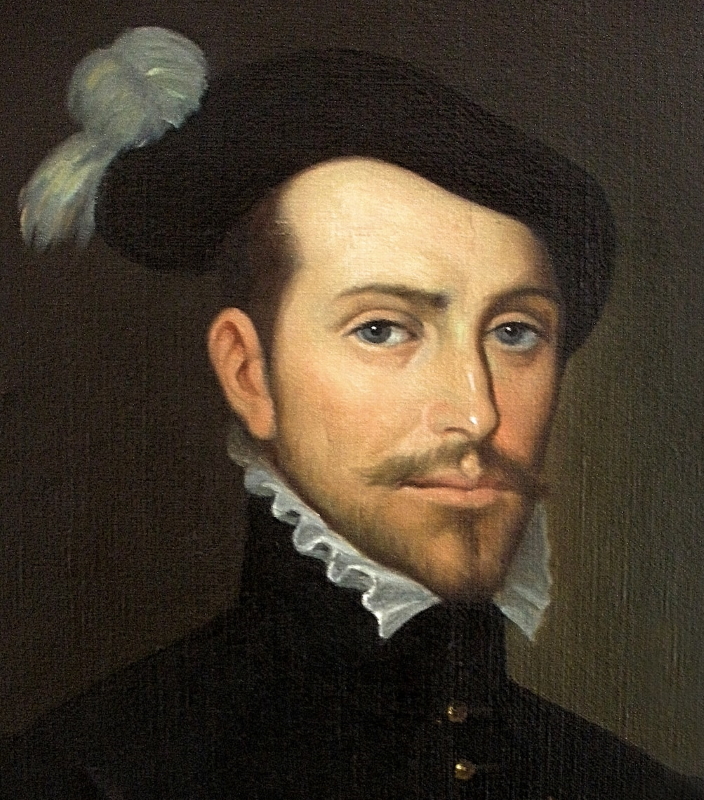 Cortés
was of a lower rank of nobility … and sought adventure to improve his
social status – coming to the New World in 1504 for that exact
purpose. He and the governor of Cuba, Velázquez, fell into
disagreement … and Cortes, hearing rumors of great wealth to be had in
the mainland Mexico, decided to undertake in early 1519 an expedition
to seek his fortune there. Velázquez attempted to block his move,
but Cortés was able to hold him off … and secure assistance from the
local Mexicans (and find a wife and interpreter, La Malinche. He
also scuttled all his ships … to make it clear that there would be no
retreat from this venture. Then he marched on Tenochtitlan with
600 of his soldiers and many anti-Aztecan local warriors … massacred a
mass gathering of Mexican aristocrats in order to strike fear in the
Aztec emperor Montezuma – and finally in November met Montezuma at his
capital. Cortés was received lavishly and accorded various
political honors. At first their relations were friendly. Cortés
was of a lower rank of nobility … and sought adventure to improve his
social status – coming to the New World in 1504 for that exact
purpose. He and the governor of Cuba, Velázquez, fell into
disagreement … and Cortes, hearing rumors of great wealth to be had in
the mainland Mexico, decided to undertake in early 1519 an expedition
to seek his fortune there. Velázquez attempted to block his move,
but Cortés was able to hold him off … and secure assistance from the
local Mexicans (and find a wife and interpreter, La Malinche. He
also scuttled all his ships … to make it clear that there would be no
retreat from this venture. Then he marched on Tenochtitlan with
600 of his soldiers and many anti-Aztecan local warriors … massacred a
mass gathering of Mexican aristocrats in order to strike fear in the
Aztec emperor Montezuma – and finally in November met Montezuma at his
capital. Cortés was received lavishly and accorded various
political honors. At first their relations were friendly. The following year, 1520, Cortés had to go East in order to take on an army that that Velázquez had sent to crush Cortés. However, Cortés not only defeated this army but added it to his own forces … and returned to Tenochtitlan. The situation in Tenochtitlan at this point was chaotic … and Montezuma was killed (by whom exactly?) – and Cortés and his men fled an angry Indian population. But gathering new forces, Cortés marched again on Tenochtitlan, and was able to defeat the Aztec forces there. He then took control of the realm … which he claimed for Spain – and renamed Tenochtitlan as "Mexico City." King Charles appointed Cortés as governor of "New Spain" … but sent "advisors" … to keep things there under tight royal control. Yet, as the situation required that the king's new Indian subjects become properly "Christian," Cortés proved to be very supportive of the effort by Franciscan and Dominican monks to see this conversion achieved throughout the land. Cortés would also lead a military expedition south into Honduras … to prevent a Velázquez agent from taking control there … and possibly threatening Cortés position in New Spain. This effort brought him in trouble back in Spain … which he returned to in order to defend himself. He succeeded grandly … and was returned to New Spain … where, after bringing some end to the political intrigue going on there, he lived out the rest of has days rather grandly (very wealthy from his silver mines). 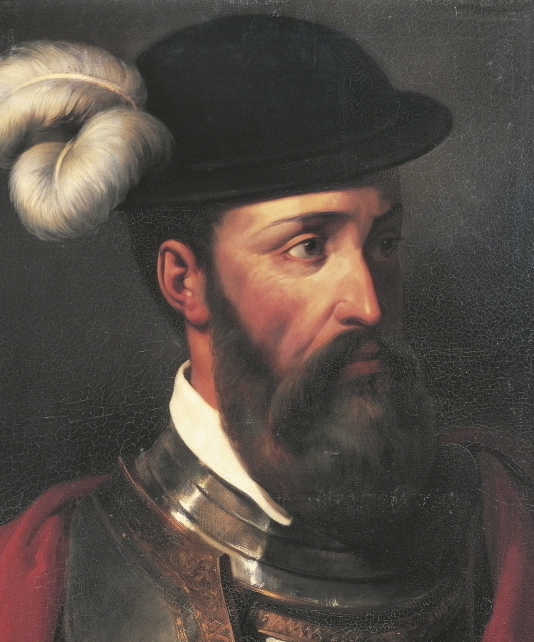 Pizarro
was of illegitimate and poor background (though cousin of Cortés … and
endowed with the same ambitions as his cousin. However, he would
make his fortune his own way … joining Balboa in crossing Panama ...
and then eventually settling there, assigned finally the office of
mayor of what would become Panama City. Pizarro
was of illegitimate and poor background (though cousin of Cortés … and
endowed with the same ambitions as his cousin. However, he would
make his fortune his own way … joining Balboa in crossing Panama ...
and then eventually settling there, assigned finally the office of
mayor of what would become Panama City.But the rumors of "El Dorado" coming from the South interested him more, and led him to form up a three-man partnership with fellow-soldier Almagro and priest Luque … and they put together plans for an expedition South in the quest of this Land of Gold. Two ventures (1524 and 1526) from Panama along the Pacific coast brought them no further South than Colombia … and lots of trouble from the local Indians – although the discovery of some gold, silver and jewels on the second voyage confirmed rumors sufficiently for Pizarro to overcome Panamanian opposition and head to Spain to plead his cause (a third expedition) before King Charles. Receiving royal support, he returned to Panama to set out on that third expedition (joined by another explorer, de Soto) at the end of 1530. Meanwhile, Incan society was facing chaos from a major plague (probably smallpox which had made its way south from the Spanish settlements) and from a bitter battle between brothers, Huáscar and Atahualpa, for the title of Incan emperor. Arriving at the moment that Atahualpa proved successful in the fight, and hearing of these developments, Pizarro sent word to Atahualpa, inviting him to meet with him in celebration of his victory. Tragically this is what Atahualpa did, unconcerned about the dangers posed by these intruders into his realm, with 8,000 Incan warriors meeting 168 Spanish troops for the occasion. But Pizarro was determined to capture Atahualpa … realizing already the terror that his guns caused among the Inca. Ultimately Pizarro succeeded in his plans, seized Atahualpa and held him for ransom … which turned out to be a room filled with gold – and two side rooms filled with silver.1 Then after the ransom was delivered, Pizarro sentenced Atahaulpa to death for the murder of his brother Huáscar. With Atahualpa's death, the Incan Empire found itself in chaos … making it easy for the Spanish (with added troops) to eventually bring the empire under Spanish-Catholic rule. Then Pizarro and his partner Almagro fell into dispute over the city of Cuzco and whether their respective Peruvian domains – Pizarro's New Castile and Almagro's New Toledo – that they now governed included that vital city. Eventually (1538) Almagro was defeated in battle and executed … and Almagro's son stripped of his inheritance. But two years later, supporters of the younger Almagro assaulted Pizarro's palace … killing Pizarro. But the following year Almagro himself was killed in battle. 1Estimates are that the value of the ransom equaled over 1.5 billion in today's dollars … and the amount then seized from the Incan treasury to be another $1.5 billion. This would be the beginning of Spain's massive rise to power on the basis of the wealth the Spanish monarchy was able to extract from its American holdings. 
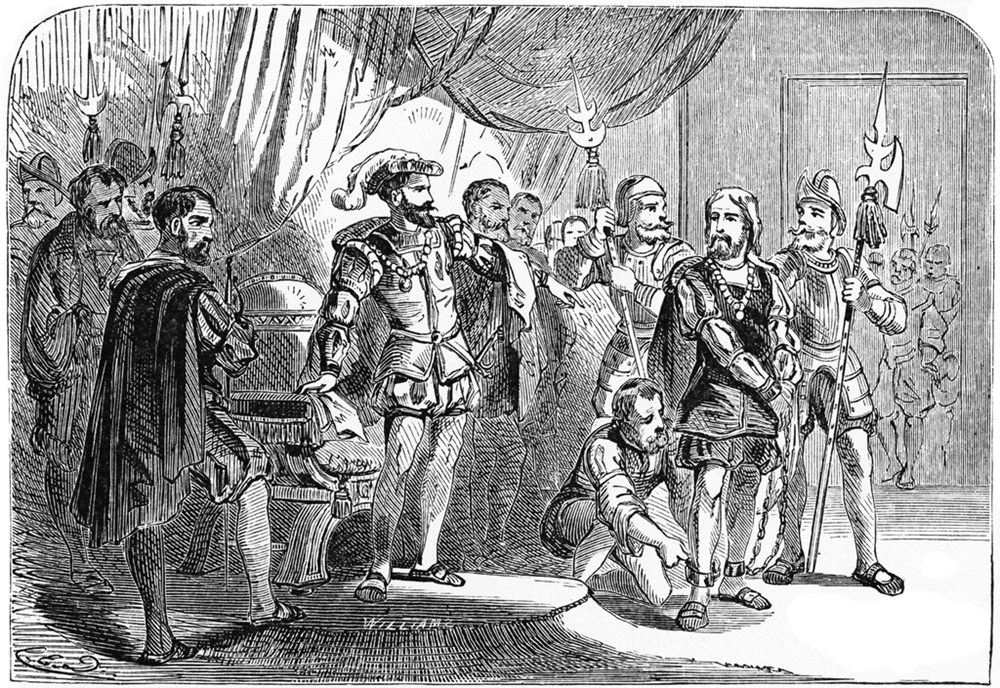 Cortés in Mexico 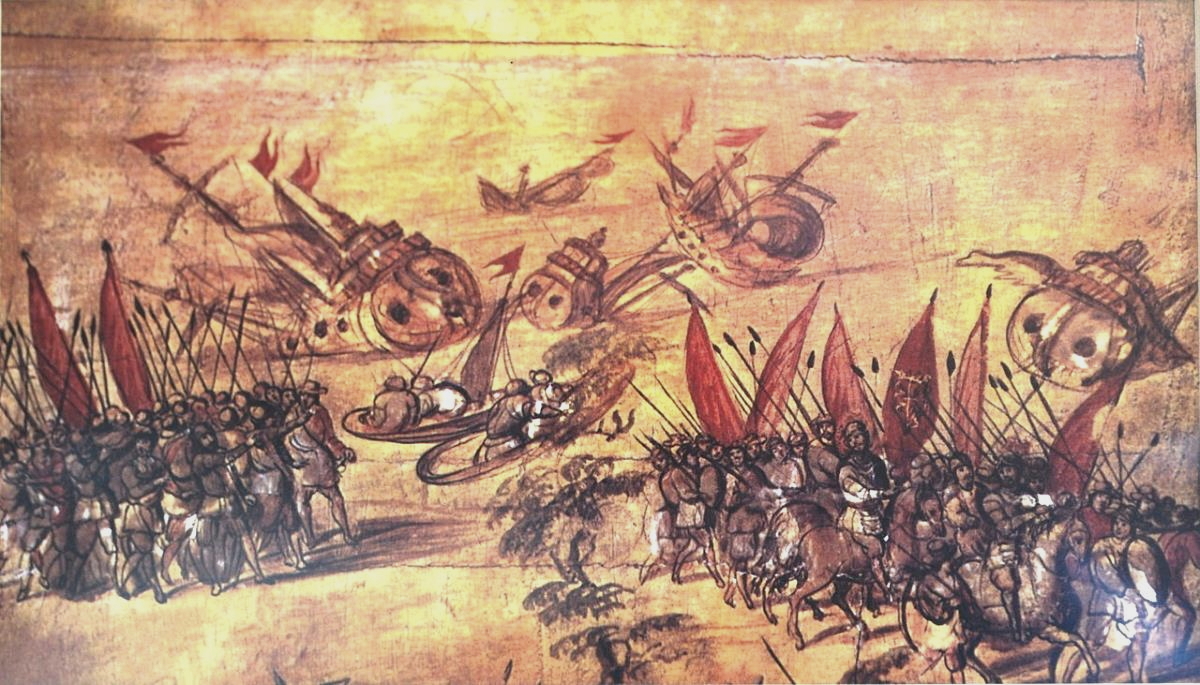
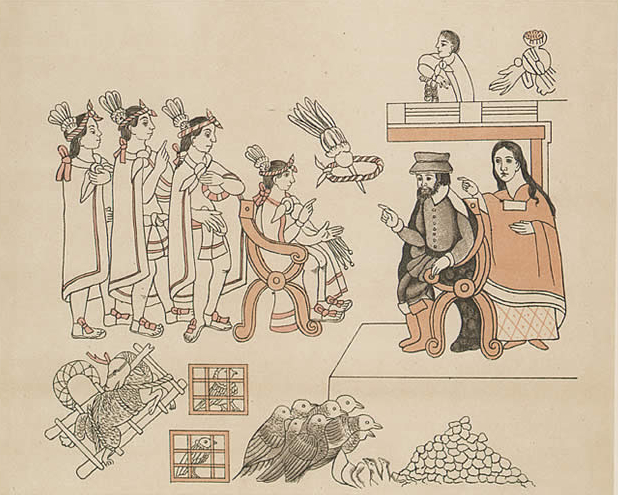 Cortés and his wife La Malinche meeting with Montezuma II - November 1519 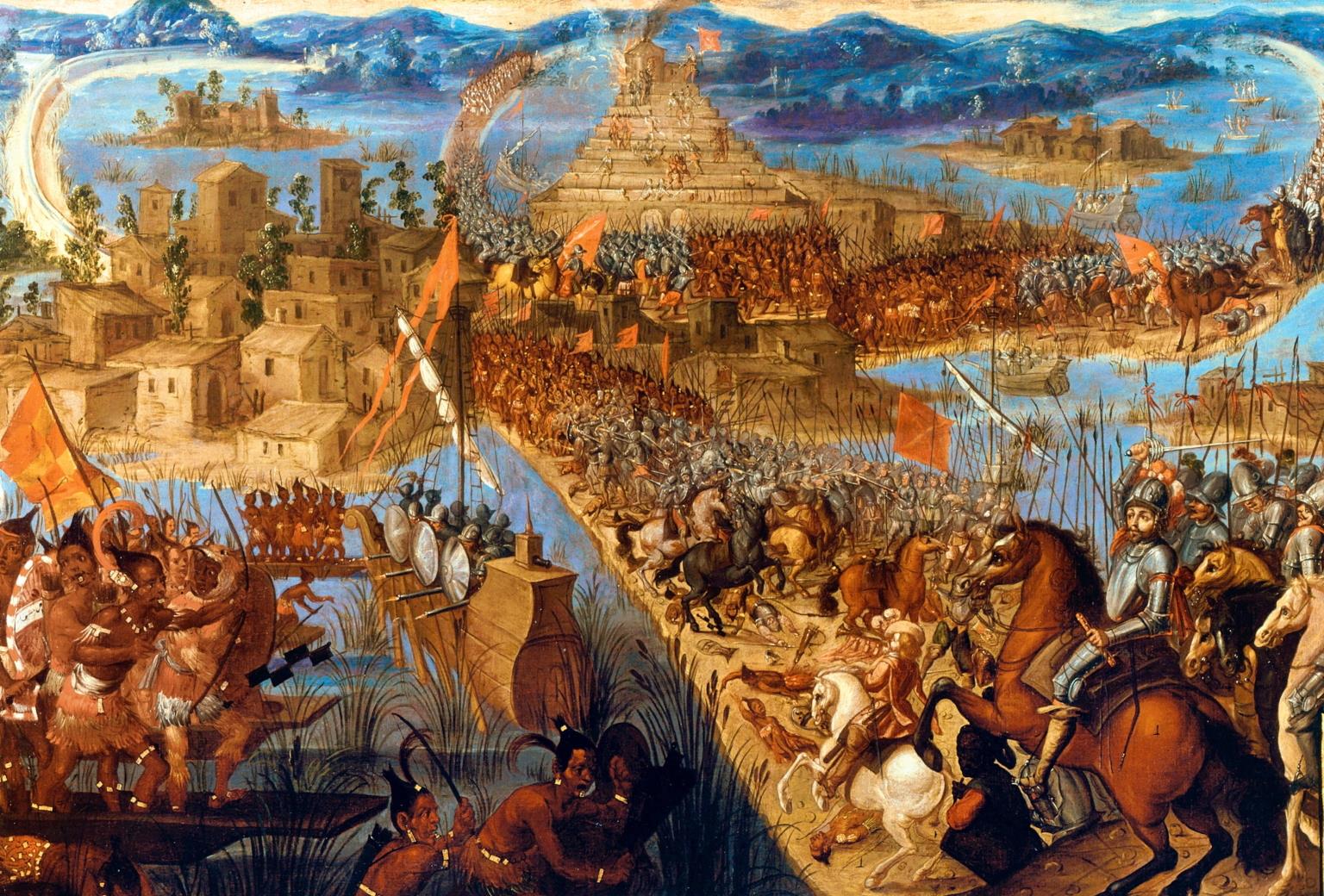 The Spanish and their Indian allies march on Tenoctitlan - 1521 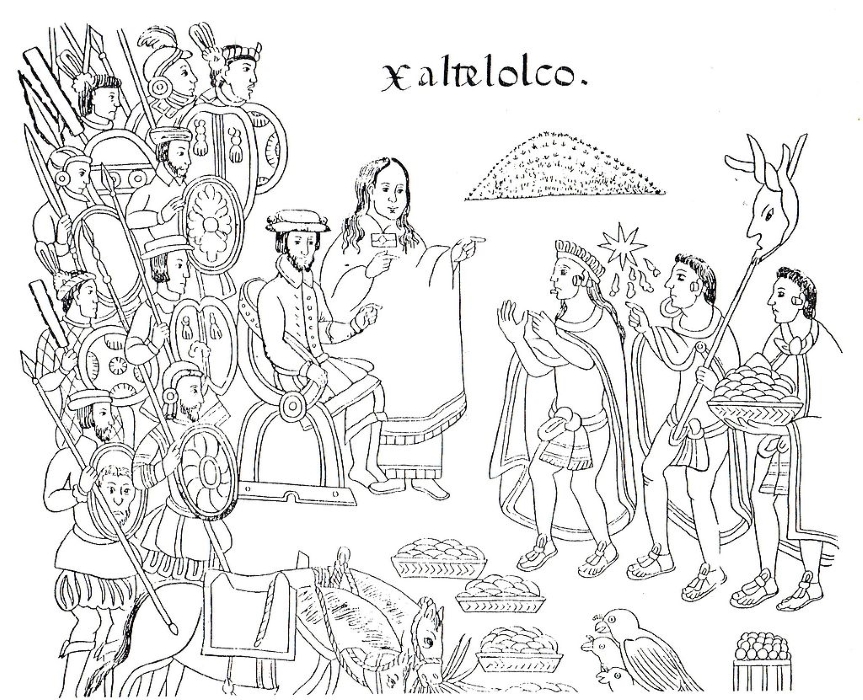
Pizarro in Peru Pizarro arrives in Peru 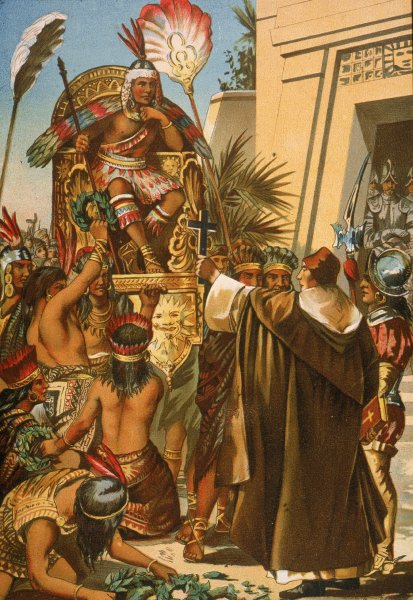 Atahualpa meets the Spanish 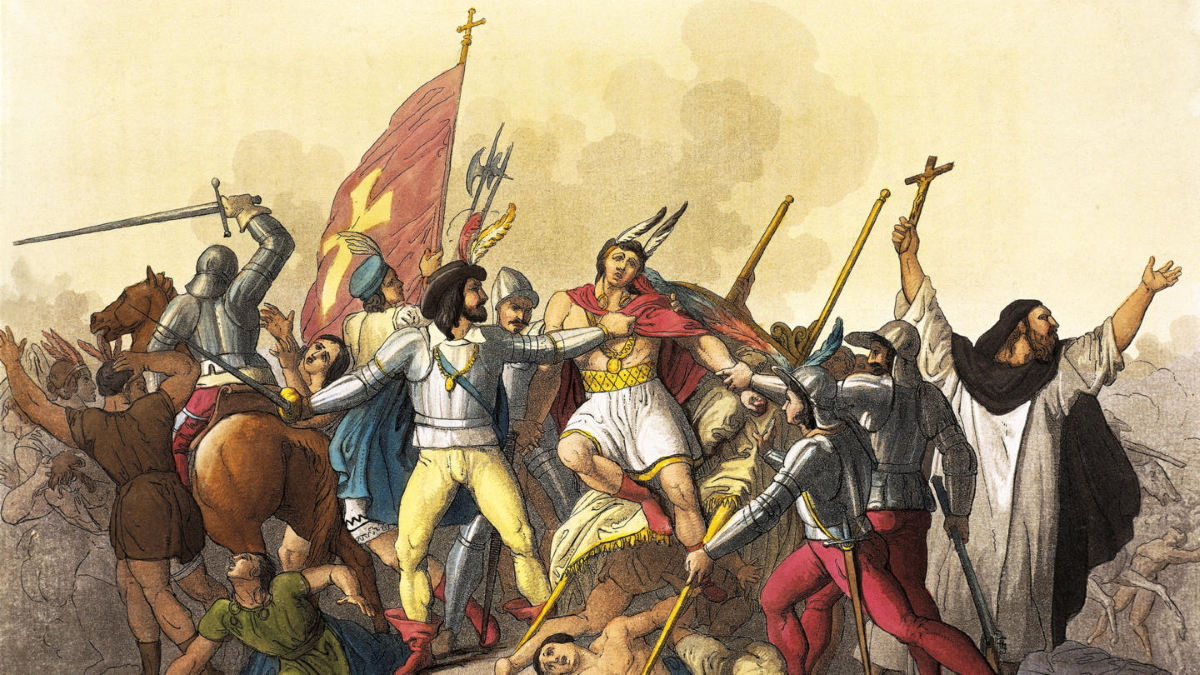 Pizarro siezes Atahualpa 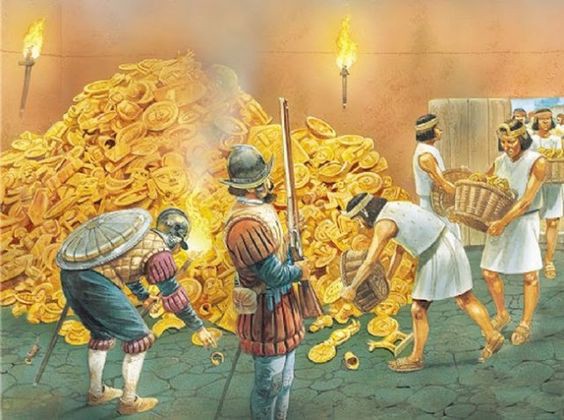 For his ransom, Atahualpa delivers a room of gold (plus two rooms of silver) 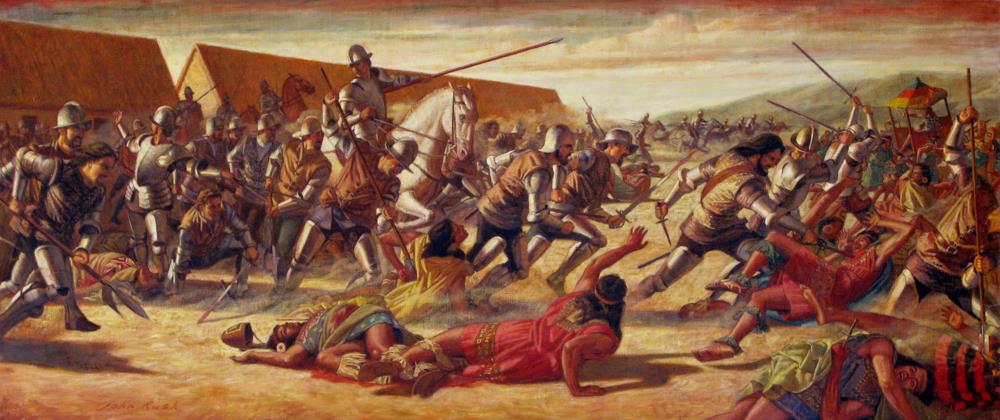 The Spanish conquest of Peru Portuguese slave trading
colony at Elmina (founded 1421) on the Gold Coast (modern Ghana)
|









